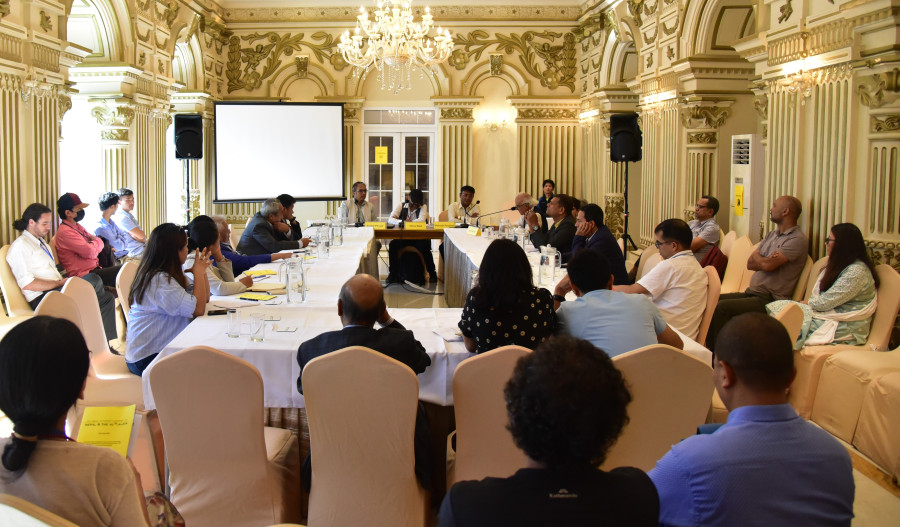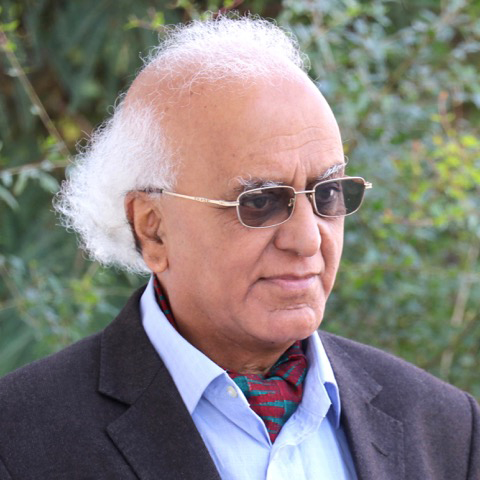Columns
Creative discourses at the Baha seminar
Serious and dedicated discussants and audiences give conferences a special character.
Abhi Subedi
The Annual Kathmandu Conference on Nepal and the Himalaya, organised by Social Science Baha, a research organisation in association with some institutions from Nepal and abroad, from July 24-26 in Kathmandu, was a huge success. My participation was minuscule in the event. I attended a few sessions and listened to some papers out of the 56 presented this year.
Prof Nirmal Man Tuladhar, chair of Social Science Baha, naturally sounded proud while telling us about the growing popularity of the conference each year. I have not accessed a comprehensive analysis of the nature, size and features of the Baha conferences held in the metropolis. What I know is that they are well-attended and used by a wide cohort of researchers, scholars, dreamers and some freaks. That is, of course, the nature of conferences of such size anywhere in the world. The Baha conference is a focussed affair where senior scholars and PhD researchers converge. I was told some of them have already booked their conference seats for next year. Such is its popularity.
They take up diverse themes like Nepal, the Himalayas, earth and ecology, nature, ideas, fieldwork methods, changing societies, mental problems, the agonies of Mother Earth, altitudes and human behaviours. This paints a picture of diversity. Serious and dedicated discussants and audiences give conferences a special character. There is no time for little breaks either in the day or night for a few rounds of poetry readings and music performances. No painter rushes with brush and palette. It would be a diversion.
Deepak Thapa’s successful leadership is one reason for Social Science Baha’s continuity and freshness. I do not have other information about people and institutions to present here. As it is linked to the Himal association, it has always benefited from Kanak Dixit’s leadership, research and contacts, among others.
Martin Cahutari is another research institute and public forum that is open year-round. People use the Chautari for meetings, presentations and interactions. It has an excellent library where one can access research materials and a collection of books and journals with research relevance. Historian Pratyoush Onta’s dedication and scholarship, as well as the hard work of his cohort and their research, have kept the Chautari going.
The Linguistic Society of Nepal organises internationally popular annual conferences. It sometimes works in tandem with the Central Department of Linguistics, too. The Literary Association of Nepal is another organisation that holds seminars annually. As chairman of both of these associations in the past, I can write other articles about the struggle to create a forum for such organisations. It was not easy to work at a time when the political system of the country was not democratic. The broader international participation and the free expression of opinions were particularly in focus. But we continued the work. Today, I feel happy that our erstwhile students, who have become academics, run these organisations.
I remember making some short presentations at Baha in the past. This year, I was invited to discuss at a session "Of Journeys and Worldviews: Formation of Early Modern Consciousness in Nepal". Three Central Department of English academics, Shiva Rijal, Mahesh Paudyal and Komal Phuyal, made different presentations on the above theme. The courses in the department are interdisciplinary. They chose Nepali fictional and dramatic texts that address the times when travelling on foot was a common practice.
According to these scholars, the well-known Nepali literary texts that depict this condition give a picture of a feudal society where people's physical mobility coheres with the level of consciousness and characters’ aspirations. Through their analyses of the texts, they discussed a condition of power and discipline; they evoked the theories of New Historicism and the power and knowledge of the French theorist Michel Foucault. My comments were woven around these themes.
Rijal gave a picture of a society where an individual’s journeys, confusions and quests get dramatised in the plays. Travelling on foot sets the stage. He addressed the tension between the wide space of travel and its representation on small impromptu stages. The staging of Mukunda Indira (1939) and Sahanshila Sushila (1940) at Durbar High School and the newly opened Judhyodaya Public School, respectively, shows that theatrical reality. The text Mukunda Indira is set along the route to India, whereas Sahanshila Sushila is set in Kathmandu and Nuwakot. Rijal's theory is that ''Reading Nepal’s walking era through modern plays is not a literary experience alone.'' It opens up more.
Phuyal chose early fictional texts like Lil Bahadur Chhetri’s Basain (1957) and Lain Sing Bangdel’s Muluk Bahira (1948). He claimed these fictional works show the "formation of the political self of the society." He sees through these novels the Nepali state making efforts to what he calls "to intellectually and politically awake itself from the grip of traditional lynchpins."
Paudyal’s choice of what he rightly calls "seven representative Nepali short stories" written in pre-modern Nepali times represent the long forties of the 20th century. As the engine-propelled means of transport had not become accessible, especially to the common people wanting to move, travelling became solely a bodily performance. He shows how, in the stories, this factor becomes a reality.
In my observation, I put that some questions may be addressed while discussing the form of travel then. The accessibility of the rails in India for the Nepalis to travel extended the reality of what the paper writers rightly called pre-modern travel on foot. Through human contact, migration to places like Assam, Burma and other areas of British India became possible.
However, the three paper presenters rightly evoked the conditionality of power and social mobility by using the mode of travel by foot. Using fictional characters, the paper writers gave their theory new power and explained the phenomenon of a consonance of life, reality and imagination. They had selected fiction and drama, which alone could capture that reality by bringing society, creativity and forward-looking dynamism into play. That dynamism is different from any anthropological or social study. A cohort of research-savvy audience, including Onta, discussed the subject introduced by the three scholars.
I appreciate the modality of the existing conferences. This particular conference was different and effective. I returned with a good experience that evening.




 13.12°C Kathmandu
13.12°C Kathmandu















